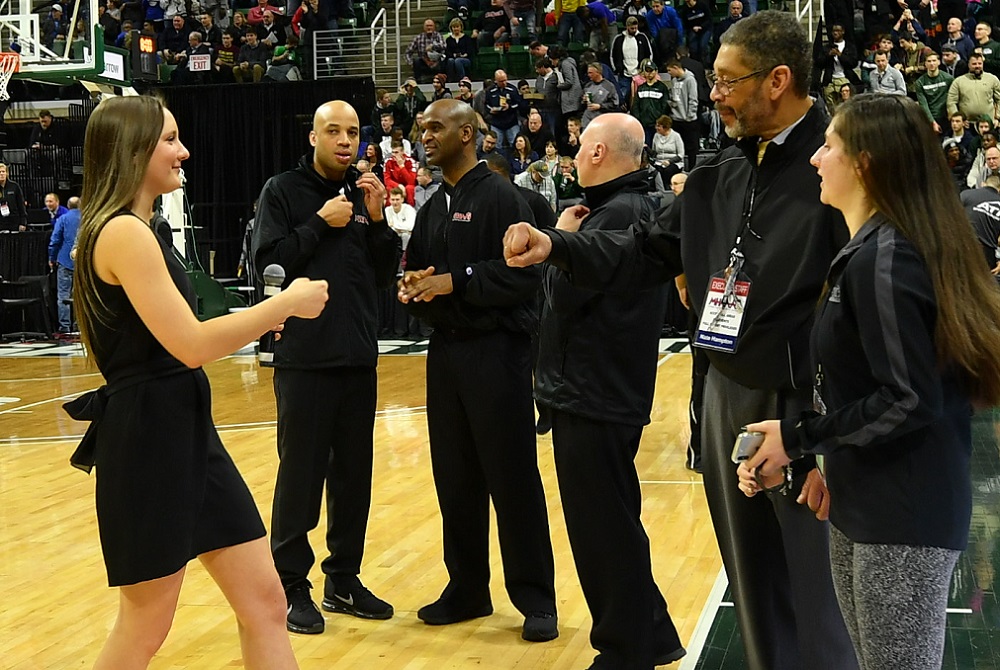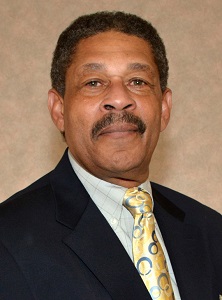
Winter Preliminary Concussion Data Announced
May 3, 2016
By Geoff Kimmerly
Second Half editor
The Michigan High School Athletic Association has found through collection of preliminary data that fewer than two percent of its more than 70,000 winter student-athletes experienced potential concussions during the season that concluded in March.
The MHSAA this school year requested for the first time that member schools report possible concussions by their student-athletes during both practice and competition. A first set of preliminary data announced in December showed only two percent of more than 100,000 high school fall athletes experienced concussions during that first season of the 2015-16 school year.
As it did for the fall, the MHSAA again received data from more than 99 percent of its member high schools at the end of the winter season. The average number of possible winter concussions reported by member high schools through May 2, 2016, was 1.6 concussions per school – half the average per school reported for the fall season. Just more than 39 percent of reporting schools stated they had no concussions by athletes this winter.
Girls and boys basketball, by far the most popular winter sports by participation, also revealed the highest percentage of winter concussions. Girls basketball, with 22 percent of all winter athletes, revealed 38 percent of possible concussions. Boys basketball, with 30 percent of winter athletes, followed with approximately 20 percent of reported possible concussions. Wrestling, with 13 percent of winter athletes, also registered approximately 20 percent of possible concussions.
In addition to breakdowns by sport, the breakdown by gender this winter also was significant. Total, girls make up approximately 38 percent of athletes who compete during the winter season – and girls experienced 48 percent of the possible concussions reported.
“This second set of preliminary data continues to tell a story behind concussions that we anticipated,” MHSAA Executive Director John E. “Jack” Roberts said. “Most importantly, these findings show that concussions are affecting our female athletes just as much as our male athletes. Concussion care is not a football-focused issue, but something we must work to improve for both genders and across all sports. Eventually we will want to encourage and support research that might inform as to why, beyond differences in physiology, more concussions are reported for girls than for boys.”
Data collected by the MHSAA remains preliminary, in part, because results noted include pending reports that have not been verified. After completion of these follow-up reports, the final number of concussions that actually occurred this past season and during the fall may be lower than the preliminary numbers being reported at this time.
The data analyzed to date is for high schools only, although middle schools also have the opportunity to report possible concussions. A full breakdown of the data including concussions by gender, sport, team level (varsity through junior high) and setting (practice or event) will be reported after the conclusion of this spring 2016 season.
The reporting of possible concussions is part of a three-pronged advance by the MHSAA in concussion care during the 2015-16 school year which is producing data related to the frequency and severity of head injuries. The MHSAA this fall launched the largest ever state high school association sideline concussion testing pilot program, with 62 schools taking part by using one of two screening tests designed to detect concussions. One of the objectives of the pilot is to increase awareness of concussions and improve sideline detection; and preliminary results indicate that the average number of possible concussions reported by pilot schools exceeds the average reported by schools outside the pilot group.
Of 30 schools reporting the most possible concussions this winter, seven are part of the MHSAA’s pilot sideline detection programs. Those programs – King-Devick Test and XLNTbrain Sport – utilize technology to provide on-site testing of athletes who have sustained possible concussions, with results of those examinations then compared against baseline tests taken by athletes previously.
The MHSAA also is the first state association to provide all participants at every member high school and junior high/middle school with insurance intended to pay accident medical expense benefits – covering deductibles and co-pays left unpaid by other policies – resulting from head injuries sustained during school practices or competitions and at no cost to either schools or families. The program will produce additional data about the frequency and severity of head injuries. After the fall and winter seasons, only 110 claims have been made on the insurance policy designed to assist in payment for concussion care. Twenty-nine of the claims are for basketball (girls and boys combined), seven are for wrestling and five for injuries experienced during ice hockey activities.
Schools report possible concussions online via the MHSAA Website. Reports are then examined by members of the MHSAA staff, who follow up with school administrators as those student-athletes continue to receive care and eventually return to play. Student privacy is protected.
Previously, the MHSAA also was among the first state associations to adopt a return-to-play protocol that keeps an athlete out of activity until at least the next day after a suspected concussion, and allows that athlete to return to play only after he or she has been cleared for activity by a doctor (M.D. or D.O.), physician’s assistant or nurse practitioner. The follow-up reports schools are providing the MHSAA reveal that the majority of students are being withheld from activity for a week or longer following the reported concussion. This will be discussed in more detail when the MHSAA releases a more comprehensive review that covers the entire school year.
The MHSAA is a private, not-for-profit corporation of voluntary membership by more than 1,400 public and private senior high schools and junior high/middle schools which exists to develop common rules for athletic eligibility and competition. No government funds or tax dollars support the MHSAA, which was the first such association nationally to not accept membership dues or tournament entry fees from schools. Member schools which enforce these rules are permitted to participate in MHSAA tournaments, which attract more than 1.4 million spectators each year.

MHSAA's Hampton Retires After Half-Century of School Sports Service
By
Geoff Kimmerly
MHSAA.com senior editor
July 30, 2021
Longtime assistant director Nate Hampton has retired after 32 years on staff with the Michigan High School Athletic Association and 50 serving in education and educational athletics.
After 18 years working in schools, Hampton began his tenure as part of the MHSAA staff on Sept. 5, 1989, and his impact has been felt across many sports and subjects over the decades. He has served as the MHSAA’s administrator for the majority of its most-played sports – football, girls and boys basketball and girls & boys track and field – as well as serving as staff liaison to the MHSAA Athletic Equity Committee and Upper Peninsula Athletic Committee.
His longtime guidance will continue to be felt nationally as well. Hampton served multiple terms on committees for the National Federation of State High School Associations (NFHS), including the football and basketball rules committees.
 “Nate has been a giant in high school athletics in Michigan over half a century and through eras that have seen the shaping of school sports as they’re played today,” MHSAA Executive Director Mark Uyl said. “The knowledge and leadership he’s provided locally, statewide and nationally has benefitted thousands of athletes and their families, both in how educational athletics are administered on the field and off.”
“Nate has been a giant in high school athletics in Michigan over half a century and through eras that have seen the shaping of school sports as they’re played today,” MHSAA Executive Director Mark Uyl said. “The knowledge and leadership he’s provided locally, statewide and nationally has benefitted thousands of athletes and their families, both in how educational athletics are administered on the field and off.”
Hampton received the Michigan High School Coaches Association’s Jack Johnson Distinguished Service Award in 2020 for his many contributions. He previously received a Citation from the NFHS in 2011 and also has been recognized by several other Michigan organizations including the Basketball Coaches Association of Michigan, Michigan Interscholastic Athletic Administrators Association and Michigan Interscholastic Track Coaches Association.
Hampton is a 1966 graduate of Detroit Eastern High School. He went on to earn his bachelor’s degree from Morgan State University (Md.) and a master’s from Eastern Michigan University.
Prior to joining the MHSAA staff, Hampton taught and coached one school year at Dearborn Heights Robichaud High School followed by 15 years total with the Highland Park School District where he coached three sports, taught and served as athletic director during his tenure. In 1987, Hampton began as supervisor of athletics and physical education for the Saginaw Public School District, where he was responsible for all phases of the athletic programs for both high schools, five middle schools and 24 elementary schools.
Hampton also served on the MHSAA Representative Council prior to joining the staff.
The majority of Hampton’s duties have been assumed by recently-hired assistant director William McKoy, who joined the staff earlier this month after previously serving as athletic director at Romulus Summit Academy North.
PHOTO: MHSAA assistant director Nate Hampton, second from right, thanks a national anthem soloist during the 2019 Boys Basketball Finals at Breslin Center.

